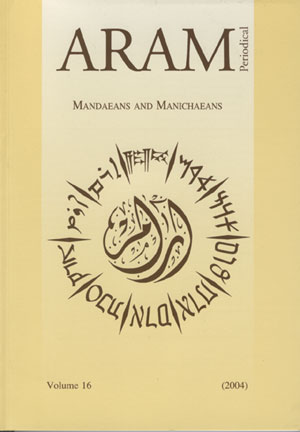 previous article in this issue previous article in this issue | next article in this issue  |

|
Document Details : Title: Bishops and Metropolitans of the Antiochian Patriarchate in the 17th Century Subtitle: Their Relations to the Muslim Authorities, their Activities and their Ethnic Background Author(s): WALBINER, Carsten-Michael Journal: ARAM Periodical Volume: 10 Issue: 1-2 Date: 1998 Pages: 577-587 DOI: 10.2143/ARAM.10.1.2002157 Abstract : There are two good reasons for limiting this study to the 17th century. On one hand several sources of mainly Arab origin allow a nearly complete reconstruction of the notitiae, the lists of the espicopal sees, for this century; on the other hand these sources provide interesting biographical material about the incumbents which is not available in this abundance for earlier periods. In addition, one should not forget that the 17th century is of special importance for the history of the Melkites. It became the starting point for a process of cultural revival amongst the Arab Christians. Greek Orthodox metropolitans and patriarchs like Meletius Za?im, Meletius Karmah and Athanasius ad-Dabbas were the early protagonists of this movement. In the field of Church policy the 17th century has to be recognised as the eve of the splitting of the Antiochian patriarchate into an Orthodox and a Catholic branch, which finally became reality in 1724. In both spheres – that of culture and that of Church policy – the development was influenced by intensified relations with European powers and institutions as well as with the Orthodox East. I shall mention only the similarly increasing numbers of European diplomats and missionaries in the Levant, the probable increase in the number of visits of Oriental clerics to Europe for reasons of study, work, teaching and politics, and not least the journeys of some high ranking representatives of the Antiochian patriarchate to the bilad al-masiÌiyin, the Orthodox principalities and kingdoms in the Balkans, the Caucasus and Russia. Shortness of time obliges me to limit myself to just a few aspects. So after a brief description of the geographical extent of the Antiochian patriarchate in the 17th century, three main issues will be discussed. The first of these is the relations of the bishops with the local Muslim authorities. I will make no distinction between bishops and metropolitans, as the latter's rank was only one of honour and did not imply any real power over suffragans. The second is the contribution of the bishops to the cultural life and production of the Melkite community. The third is the ethnic origin of the different incumbents, which leads to the question of to what degree the patriarchate of Antioch was “Hellenized” or “Graecized” in the 17th century. |
|
